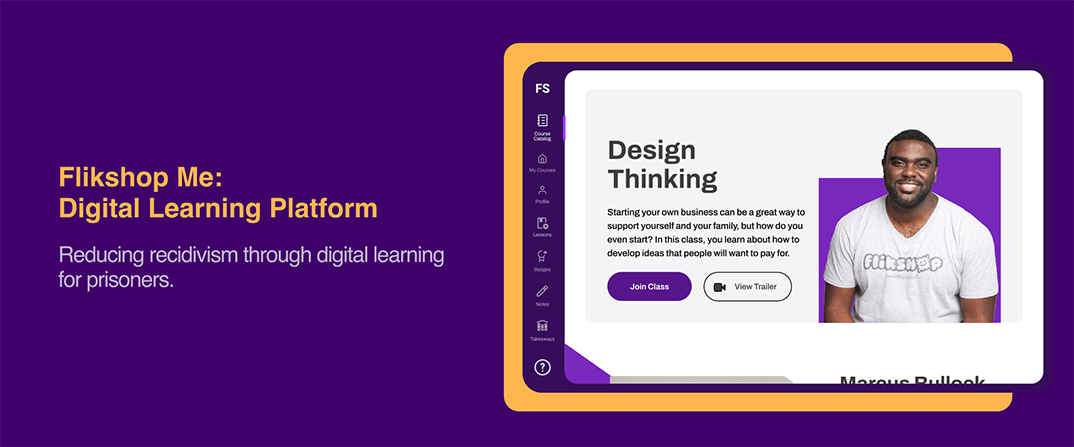
Flikshop Me
FlikshopMe endeavors to provide a digital learning environment where incarcerated people can take free classes, earn Flikshop Bucks that they can use to purchase photo prints of their loved ones, and communicate with family and friends through a secure messaging platform.
I joined this project while it was already well underway. The original Flikshop team spent time evaluating existing learning management systems (LMS), generating and exploring a wide range of solutions with potential users, building an onboarding flow, and designing a sample course based on an existing curriculum. We did our best to work with the remaining team members to build on their previous work.
Overview
Client:
Flikshop School of BusinessMy Role:
UX Researcher, Content Writer, Sprint 5 FacilitatorDuration:
January 2022- May 2022Team:
Ghayas Akbar, Matthew Alexander, Bree Douthitt, Markus Hines, Kayla WinbushLearning Management System Requirements
- Approachable, not overwhelming
- Robust
- Informal, Playful feel
- Accommodating of students with low literacy and tech literacy levels
Long Term Goal
Create a platform where students in prison can get the educational and community support they need and reduce recidivism.
Process Methodology
We used a modified sprint methodology for this project. A different student acted as the facilitator for each four week sprint and the remaining students experimented with taking on different roles such as researcher, interaction designer, visual designer, and stitcher.
Week One:
Conduct expert interviews, map the current situation, choose a target problem
Week Two:
Sketch competing solutions, choose the best one
Week Three:
Build a prototype, write user test scenarios and interview script
Week Four
Test the prototype with target audience, conduct interpretation sessions, present to the client

My Contribution
I took on a variety of roles throughout this project, however these were very loosely defined for Sprints 3 and 4. For these two sprints, I filled in as I was needed on more of a task by task basis. For Sprint 5, I was the facilitator and aided in content creation and curriculum design.
Sprint 3:
I researched people doing similar work to Flikshop and contacted them for interviews. I helped write the interview script and then led several interviews. I collaborated with the team to develop the personas.
In the sketch phase, I created the competition concept and then worked with another student to develop the low fidelity screens to share with the client.
Our client was concerned that potential security risks of connecting incarcerated people would deter facilities from allowing their residents to use the platform. Had we had better access to people in these roles, I would have liked to press further into this question. I think that competing as a team would not only provide motivation to complete assignments, it would allow students to build community with each other as they reach toward a common goal.

Sprint 4
During our sketch phase, I contributed the idea of having personalized project based courses. This came out of the feedback that users may not be familiar with the language that we often use in academia to describe courses. By creating courses that are extremely project oriented, we would provide users with a clear idea of the practical implications of their learning as well as the course deliverables. The idea had a lot of traction with the testers and the client and you can see hints of it in the final design.
I helped write the interview guide, recruited user testers, and took notes at interviews.
After our user testing, I went through the prototype and corrected the continuity errors that testers pointed out to us. At the End of Sprint Presentation, I walked our client through the low-fidelity prototype.
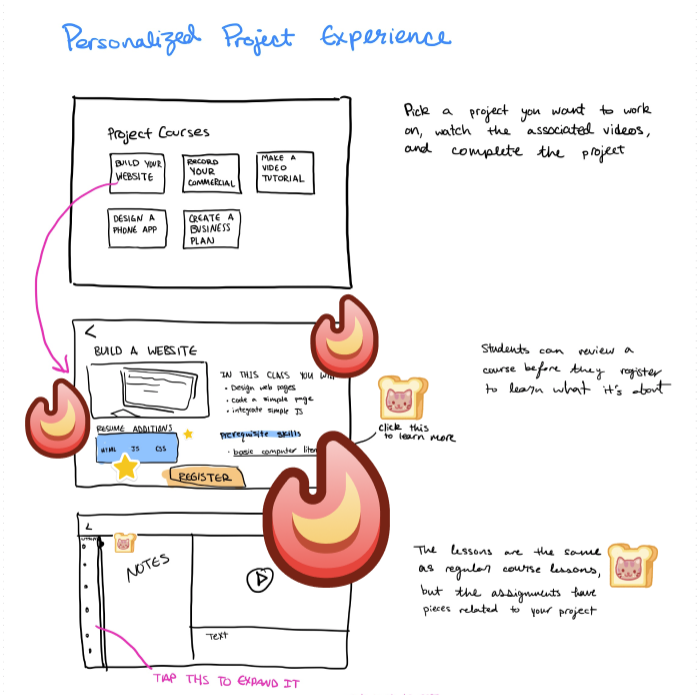
Sprint 5
During Sprint 5, I took on my favorite role of the project as Sprint Facilitator. From the moment I took on this role, I felt much more comfortable than I had in either of the previous sprints. I saw that we had a lot of ground to cover, so I wrote up a detailed sprint brief and planned our meetings down to the minute. While things didn’t always go according to plan, I think the structure helped our team to deliver the best work possible to our client.
When I wasn’t actively facilitating, I also helped out with content writing and curriculum design.
Facilitator Role
- Presented list of potential deliverables to team
- Wrote Sprint Brief with detailed deadlines and assignments
- Split team into three mini teams and delegated work according to their strengths
- Wrote and distributed meeting agendas
- Facilitated bi-weekly stand-ups and send-offs
- Facilitated heuristic review with an expert
- Managed team schedule
Content Writing/ Curriculum Design (with Bree)
- Designed course user flow
- Wrote and curated content for sample course
- Created wireframe designs of new activity screens
Research
- Recruited for and scheduled 5 user tests (4 of which occurred)
- Attended and took notes for user interviews
- Facilitated interpretation sessions for heuristic review and user tests
Sprint 3: Understanding and Leveraging Motivation
In this sprint, the team focused on understanding the user population and creating concepts that would leverage their personal desires to learn in order to create an effective learning platform that keeps students engaged long term
Sprint Highlights

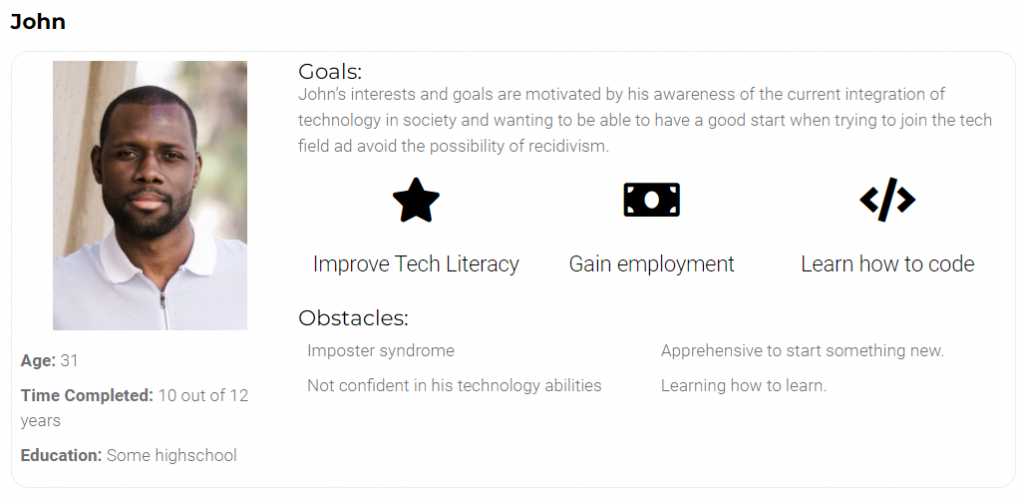

Expert Interview Data
Personas
Lo-Fidelity Concepts
Sprint 4: Fleshing out user flow and interaction patterns
In this sprint, the team focused on creating a lo-fi user flow that connected all the components from previous sprints.
Sprint Highlights
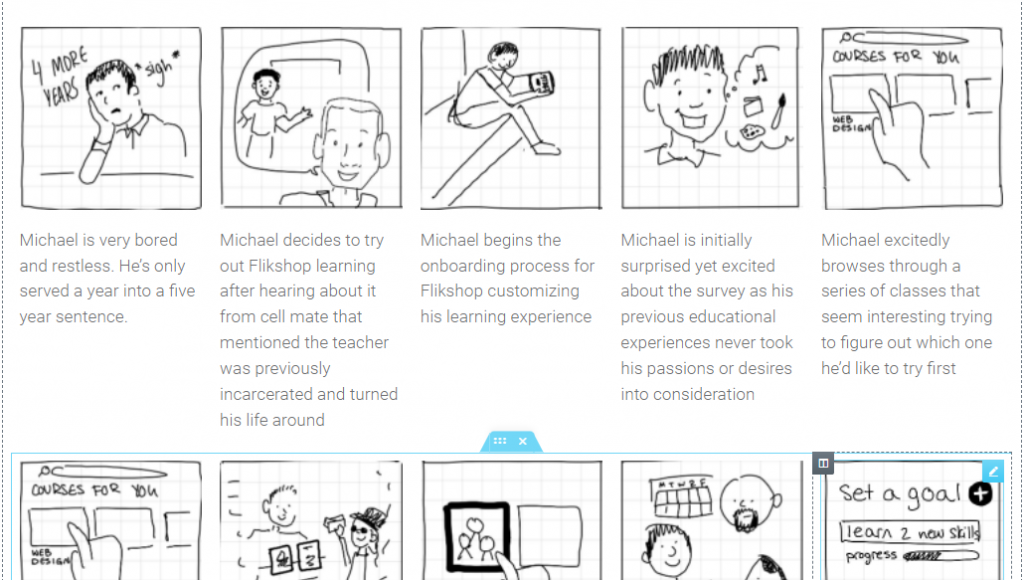
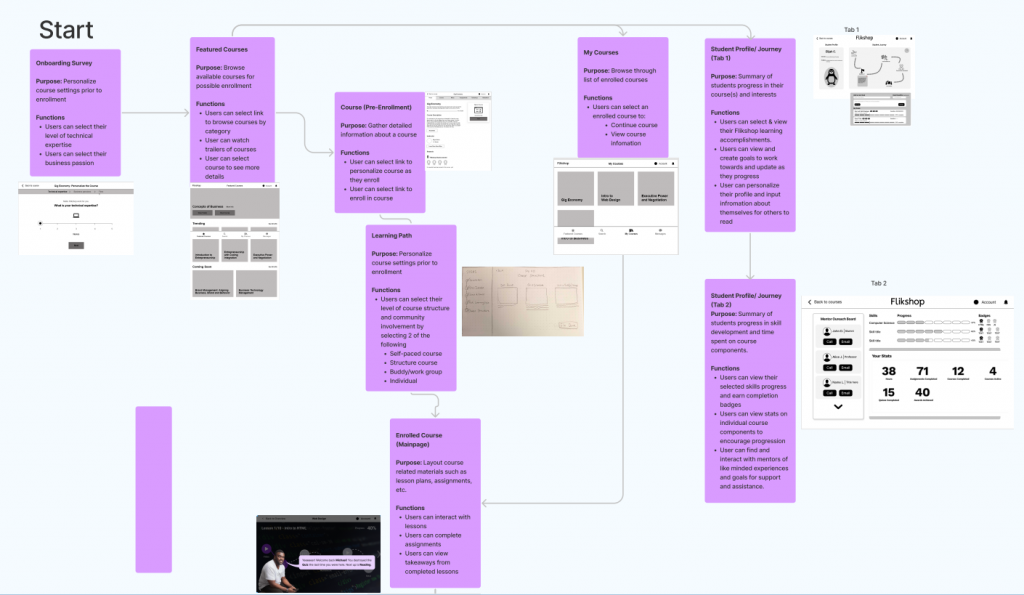
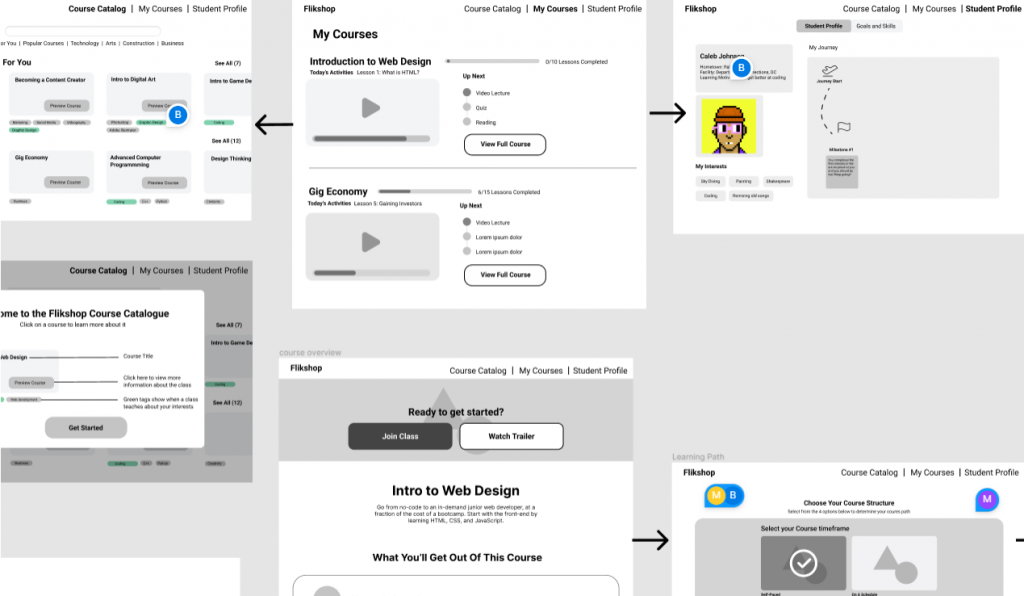
Story Board
User Experience Diagram
Low Fidelity Prototype Walk Through
Sprint 5: Establishing Consistency
In this sprint, the team sought to establish consistent visual styles, navigation, and interactions throughout a high fidelity prototype.
Sprint Highlights

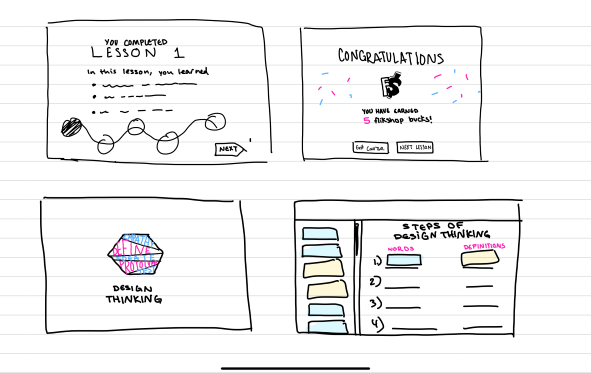

Updated Product Structure
Sample Design Thinking Course
Hi Fidelity Prototype Walk Through
Project Challenges
Access to Representative User Testing
Access to representative user testers was by far our greatest challenge in this project. We had trouble finding people who fit our criteria and an even harder time recruiting them to meet with us to give us their feedback. Perhaps if we had offered some sort of incentive, we could have turned some of our no-shows into real interviews.
Ambiguous Scope
The project scope for this project was very broad. We didn’t iterate so much on things we had already tested because each sprint was focused on seeing what else we could build. Because we kept generating more divergent ideas, we had a hard time narrowing scope until we had to in the final sprint due to resource constraints.
Change in Teammates
The change in team was really challenging because the knowledge gap between new and remaining team members was really large. The veteran team members briefed the new members, but there was a general lack of documentation from the first couple sprints which made it difficult to do individual desk research. Furthermore, nothing can replace the knowledge that comes from first hand experience. We had to learn how to overcome the natural hierarchy that surfaces between the “knows” and “knows not” so that all team members could contribute and feel valuable to the project.
Process Learnings
This was my first time working through the Sprint Methodology for an extended period. Throughout the process, I learned some valuable lessons that I will carry into my workplace moving forward.
Communicate Role Definitions
In our first two sprints, we assigned roles, but did not define those roles. This led to underperformance,
indecision, and frustration among team members.
Clarify Understanding
During Sprint 3, the team came to a false consensus. We thought we agreed on our goal, but our understandings of how that goal would play out were fundamentally different in scope.
Document Everything
I had difficulty understanding the choices and events that occurred before I joined the team because there was insufficient documentation about the design choices from earlier on.
Align on Design
Design is tricky to do in teams, but it happens all the time. We thought we could all just go at it and it would come together, but we were wrong. In order for the team to create a consistent design, it is necessary that all designers are in alignment about font styles, commonly used interactions, and colors before turning everyone loose.
Plan in Advance
Near the middle of the project, the team began to run out of steam. We did not have detailed plans for what we wanted to accomplish, so we wasted lot of time deliberating over what to do next, and we ended up missing out on finding testers and setting up appointments.
